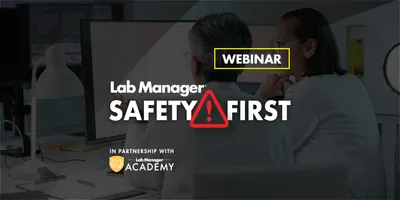“Scientific computing” used to consist of labs waiting for the next LIMS product to become commercially available and fully usable. Now, we call this area “laboratory informatics” and have many more tools as options. One example is “scientific platforms.” But it’s helpful to better understand what a “platform” is and how it supports or enhances the software we already own.
Tracking samples is a common and significant need for labs, and implementing a LIMS has been an efficient solution. But each time we want to automate or digitize beyond this purpose, we run into more challenges and realize that tools such as LIMS, ELNs, or LIS can handle just a portion of our problems. Thus, discussions are no longer limited to specific software packages but often include a platform.
Software versus platforms
Software is something you run for a specific purpose, often to map a type of workflow and to gather its data into one place. A LIMS is software. It is meant to track the samples in the lab and gather that data into the LIMS database, the one place intended to hold that data.
By comparison, a platform is a combination of tools and resources that will help you build something of a wider reach, including the computing architecture and resources to make this all happen. It is a type of IT ecosystem of its own with a specific purpose.
A scientific platform provides the tools to allow building scientific data models required to support data growth and analysis. It would include tools for AI, for example. It is attempting to solve a different set of problems than something like a LIMS as it is meant to give better options for using data coming from many data silos.
Do you need a platform?
Consider these issues:
- In recent years, our data has exploded both in types and in volume, becoming more challenging to manage and use.
- We are being pushed for more metrics, more AI, and more methods with which to use our data to drive new products, manage our businesses, and to support all aspects of our business.
- The software we own does not typically address these issues. Most software belongs to a specific group who can only work within their own silo. This causes both political and technical issues that require resolution.
You must still work out your own internal politics. However, platforms are our most recent attempt to address the technical issues. ”We’re at the beginning of a massive shift in how labs and research-led companies work with data platforms,” says Siping “Spin” Wang, founder of TetraScience. “The need to use AI to improve R&D and manufacturing is driving this shift. Science will leverage AI to its fullest only using modern cloud platforms that are vendor-agnostic and let them collect, manage, share, model, and analyze scientific data for high-value use cases."
Build versus buy
In today’s LIMS and ELN areas, we have many commercial options, are more comfortable with what purchased systems can offer, and are much more likely to buy than build. In a similar situation, for platforms, we are increasingly seeing commercial options and starting to become more comfortable with the idea of buying them.
Chris Stumpf, director, drug discovery informatics solutions at Revvity Signals lists how a strong commercial platform can offer value over a build-it-yourself strategy:
- The vendor’s ability to pre-build workflows for out-of-the-box use
- Ongoing feature and tool additions
- Maintaining up-to-date security patches by employing people who do nothing but monitor industry security issues
- Professional services for customers who do not have staff with the experience to build what is needed.
When we build anything in-house this not only has its own risks, but we must also consider whether we should “reinvent the wheel” that already exists in the marketplace.
Bryan Holmes, VP of digital & technology solutions at Andelyn Biosciences, also leans toward buying versus building platforms. “There are many advantages, including financial and resource management, that come from procuring solutions from a software company that is focused on building, maintaining, and enhancing solutions rather than having to manage those tasks internally. I would recommend the focus be spent on building strategic and differentiating technologies and not building out core solutions that are readily available in the marketplace.”
Regardless of what your current plans are, whether you are considering a scientific data platform, a LIMS, or an ELN, they tend to be large purchases. They take time to review and get into your budget. With the increased focus on speed-to-market and the incredible rise of data we need to manage, time is less on our side than ever before.
Understanding the difference between software and a platform is your starting point. Even if you doubt you truly need something like a commercial platform, you should at least begin to understand what it is and what it offers. This is true even if you have experience with implementing and managing these types of workflows and data.
It is not only the science that is quickly changing but the IT we use to support it. The strategy you used yesterday might not work today. Software brands and categories have changed, vendor staff from the Professional Services Organizations move around to other companies, and the IT backbone is sometimes entirely different. Past ideas to make solutions work might no longer be allowed due to security concerns. The technology you used may no longer be available, and there are many better solutions available to use now.











